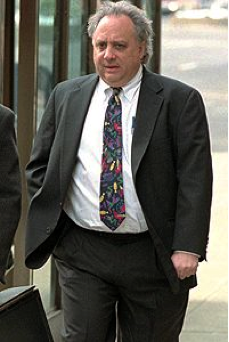(The Phar-Mor Story)
Up until 1992 Mickey Monus was considered one of America’s great entrepreneurs. In ten years he had established 300 Phar-Mor stores with 25,000 employees in 33 states. But that opinion quickly changed when Phar-Mor proved to be one of the largest fraud stories in American corporate history with losses to suppliers, banks, and investors totaling $500 million.
In 1982, Mickey Monus opened his first deep discount store in Youngstown, Ohio. He called it Phar-Mor and it sold everything from prescription drugs to shampoo, all at unbelievably low prices. A key to these low prices was "power buying," Monus's catch phrase for loading up when suppliers offered rock-bottom deals. To David Shapira, the Pittsburgh grocery executive, Monus looked like a winner with his ability to create jobs, make money, and motivate everyone who worked for him. So Shapira bankrolled the new venture and served as its CEO. Strong sales at the first store so impressed Monus's boss that a second store followed within seven months and by the end of the first year there were a total of eight discount stores. To win in the world of deep discount, you beat the other guy's price and hope to capture his customers. So for the next two years, Monus committed Phar-Mor to underselling Wal-Mart. Sam Walton even came out and made the announcement that the only company he feared in the expansion of Wal-Mart was his number-one competitor, the Phar-Mor Company.
To help him build the new firm, Mickey Monus hired young men. Many of them lacked experience, but they made up for it in loyalty to the boss. To run accounting, he chose Pat Finn. Finn soon discovered that Phar-Mor was losing money every year. To make matters worse, Monus was spending large sums of money on his World Basketball League. To show a profit each year to the investors and the auditing firm of Coopers & Lybrand, Pat Finn found it necessary to keep two sets of books. By 1989 Phar-Mor was deeply in debt, but CEO David Shapira was not aware of the accounting fraud until one day a secretary made a mistake and faxed him the wrong financial report. An accounting investigation was carried out and eventually the government accused Mickey Monus of directing the fraud. He was indicted on 129 criminal counts. The government’s chief witness against Monus would be his protégé, Pat Finn who ended up in a federal prison for 33 months.

The fraud case went to trial. After days of deliberation all the jurors in the trial found Mickey Monus guilty, except for one juror who did not agree that there was enough evidence to convict Mr. Monus. This action by this juror left the initial trial as a hung jury. After an investigation for jury tampering, both a juror on Mr. Monus's first case and a friend of Mr. Monus were charged with tampering. Following his second trial in May 1995, Mr. Monus was convicted of 109 felony counts. He served 10 years at the Elkton Correctional Institution in Ohio and now lives in Florida. His days as an entrepreneur are over.
Monus going to jail.
What happened to Coopers & Lybrand? The investors and lenders sued the accounting firm for failing to discover the fraud and on February 14, 1996, a jury found Coopers liable under a fraud claim. Unfortunately today, large accounting firms and the SEC still can’t find fraud.
